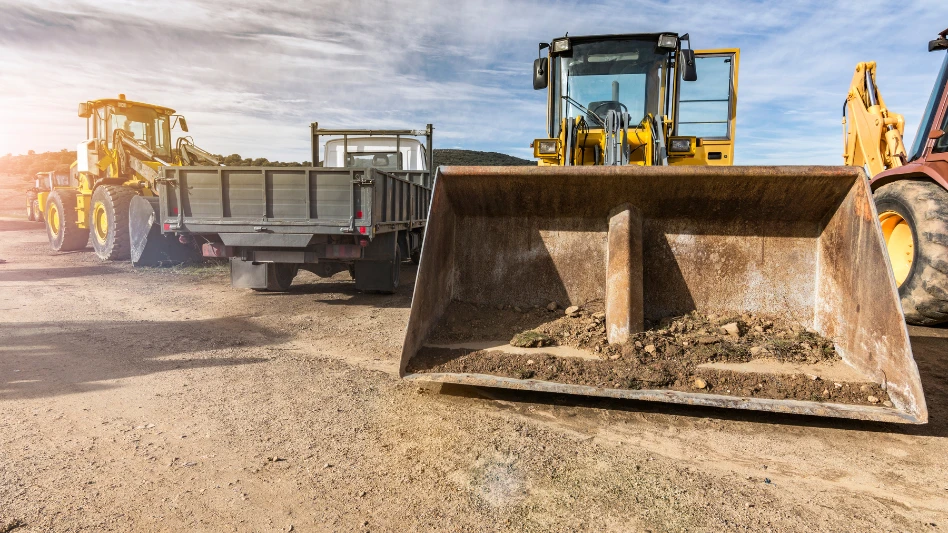.jpg) Jim HustonLast month, I discussed how general and administrative (G&A) overhead costs were primarily a function of time (weeks, months, etc.). Now I want to explain my overhead and profit per hour (OPPH) estimating method and some of its benefits.
Jim HustonLast month, I discussed how general and administrative (G&A) overhead costs were primarily a function of time (weeks, months, etc.). Now I want to explain my overhead and profit per hour (OPPH) estimating method and some of its benefits.
During the normal budgeting process, you should calculate not only your field labor costs, but you should also calculate the related labor hours for it.
In addition, you should determine your G&A overhead for the upcoming year and allocate it to your divisions if applicable. Once you quantify your field labor and G&A overhead, you can then easily calculate your G&A overhead per hour (OPH) amount. Simply divide the G&A overhead amount per division by the respective field labor hours in the division. This gives you your OPH figure.
Once you calculate your OPH amount(s), you will have a figure that it easy to benchmark. OPH amounts for the various kinds of installation and service work generally range between $10 and $16 per man-hour. Lawn maintenance work normally falls between $8 and $12 per man-hour.
When adding G&A overhead costs to a service or project, the OPPH method is very simple to use. You simply add the field man-hours in production and general conditions and multiply the total by the respective division OPH.
Once you identify the labor man-hours and costs for a service or project, you can calculate a number of ratios and per man-hour comparisons:
- Sales or revenue per man-hour (price ÷ total man-hours)
- Break-even point (G&A overhead + direct costs)
- Gross profit margin (G&A overhead + net profit margin)
- Net profit margin (in dollars and as a percent)
- Material to labor ratio (material cost ÷ labor cost)
- Equipment to labor ratio (equipment cost ÷ labor cost)
- General condition costs (in dollars and as a percent of price)
You can easily track and monitor the OPPH method to compare it to your projected man-hour and G&A overhead budget for the year. We do so by using the Bid Board, a Microsoft Excel worksheet, to track and compare budgeted to actual man-hours sold for the year.
The OPPH method is just as easy to job cost as it is to track for the year. If your annual budget is on track for both man-hours and G&A overhead, your jobs are on budget for G&A overhead if you bring your jobs in on budget for man-hours.
As we all know, budget projections and the economy can change in short order. The OPPH method allows you to quickly analyze your critical numbers and make necessary adjustments in most situations. It provides excellent data for such an analysis.
The OPPH method automatically compensates for:
- Prevailing wage or Davis-Bacon work
- Labor-intense projects (those with minimal costs)
- Material-intense projects
- Equipment-intense projects
- Work for the departments of transportation or defense
- Other government projects
One of the big pluses of the OPPH method is that it constantly reminds a service and/or installation contractor and her staff that their primary business is selling skilled labor to clients. I believe that 90 percent of a green industry contractor’s risk is caused by its field labor force. OPPH helps you and your staff analyze the right stuff and focus on it.
The OPPH method has significant advantages to the other estimating methods commonly used in the green industry today. It is not only accurate but it is also easy to implement and monitor. It can provide an excellent foundation and the data necessary for you and your staff to analyze your bids and company. However, you need to do your homework to get the most out of it. For most contractors, it’s time well spent.

Explore the December 2009 Issue
Check out more from this issue and find your next story to read.
Latest from Lawn & Landscape
- Analysis of an entrepreneur
- Terra Nova's Sedum Conga Line variety wins Best of 2024 Perennial award
- Different ways to distribute
- Case's 580EV electric backhoe loader wins Good Design Award
- Davey Tree promotes Dan Herms to VP, GM of Davey Institute
- Caterpillar's Cheryl H. Johnson set for April retirement
- Registration open for sixth annual Lawn & Landscape Technology Conference
- 12 interview questions to help you hire winners





